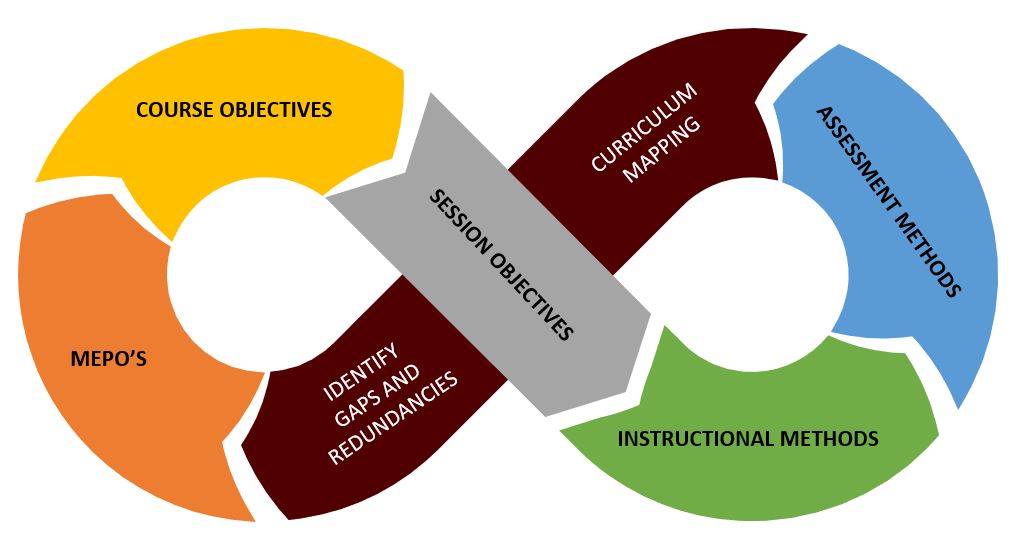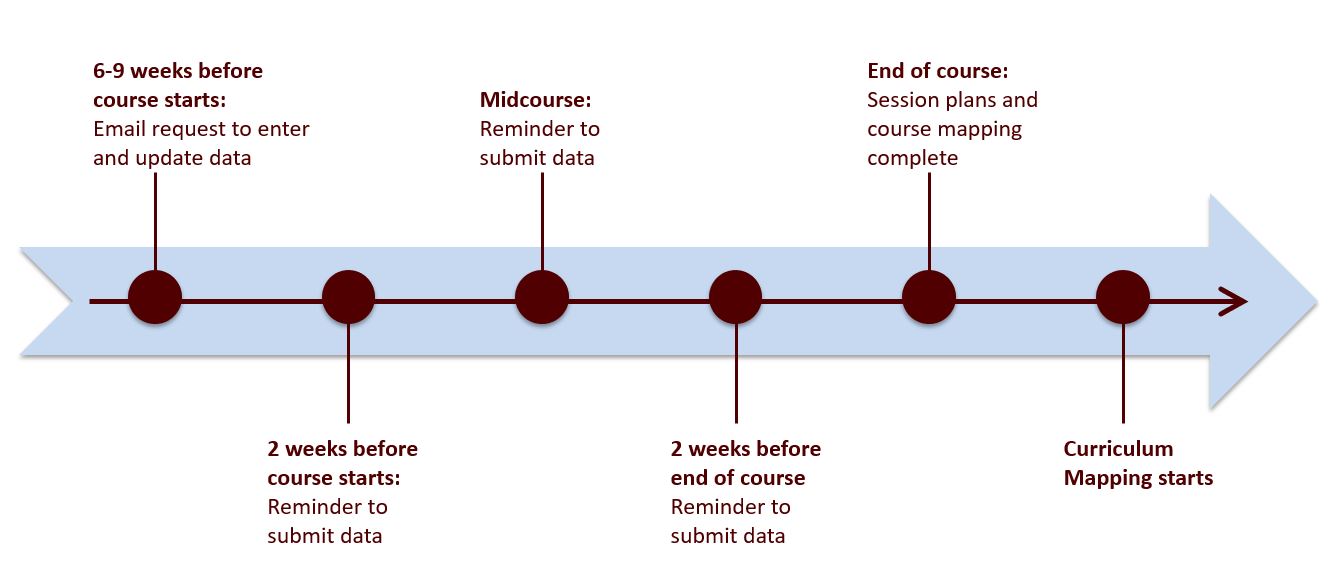Curriculum Mapping
Curriculum Mapping
Mapping Process
Curriculum mapping is the process of documenting all components of the curriculum to show the relationship between these components to help us understand what is being taught and to create opportunities for improvement by identifying redundancies and gaps.

Please contact med-aa@tamu.edu for mapping assistance.
Curriculum information on teaching sessions is collected through a Qualtrics survey. Requests for course teaching information are emailed to the course and clerkship directors about 6 weeks before the beginning of each course/clerkship.
Curriculum Mapping Process
Curriculum mapping is a process for collecting and recording curriculum-related data that identifies core skills and content taught, processes employed, and assessments used for each subject area and phase (grade level) (from www.educationworld.com)
Pre-clerkship Process

Clerkship Process

Curriculum Mapping FAQs
What is curriculum mapping?
Curriculum mapping is the process of indexing or diagramming a curriculum to identify and address academic gaps, redundancies, and misalignments for purposes of improving the overall coherence of a course of study. 1
Curriculum mapping is a process for collecting and recording curriculum-related data that identifies core skills and content taught, processes employed, and assessments used for each subject area and grade level 2
Curriculum mapping is the process of documenting all components of the curriculum to show the relationship between these components to help us understand what is being taught and to create opportunities for improvement by identifying redundancies and gaps.
Why do we need a curriculum map?
Curriculum mapping is the process of documenting all components of the curriculum to show the relationship between these components to help us understand what is being taught and to create opportunities for improvement by identifying redundancies and gaps.
Mapping also allows us to ensure curriculum is aligned vertical and horizontal.
It is essential that the faculty lead curriculum committee manages the curriculum as described in LCME Standards 8.1 - 8.4. Additionally, the AAMC Curriculum inventory project allows medical schools to share their mapping data to create a national “benchmarking and reporting tool on content, structure, delivery, and assessment of U.S. and Canadian medical school curricula for both M.D. and D.O. degree-granting accredited schools.”
Why do we have to submit session plan information every year?
The objectives may rarely change, but the DATA around each session DOES change year to year. For example, the length of a session, who taught the session, what order the sessions occur, or delivery method of the session (lecture vs. TBL) likely changes from year to year. Additionally, session level objectives may change from year to year or be reorganized into different sessions.
How can a curriculum map be helpful for our medical school?
(See-Why do we need a curriculum map section)
We can use the curriculum map to improve the curriculum by reviewing redundancies to ensure they are intentional and necessary and addressing gaps as science and content advances and changes over time. For example, health systems science (HSS) has become an essential element in medical education. The map can help us know what we already cover related to (HSS) and where we may want to add or change content related to these new objectives.
Moreover, the college can use resources to assist faculty and support courses with identifying better ways to teach content or ensure we are teaching and assessing the content we intended to teach and assess.
How can curriculum mapping benefit the faculty?
Course directors and faculty need to see what is taught before and after their course or their session so that curriculum is coherent between courses and across phases. The map allows faculty and the curriculum committee to ensure the curriculum is scaffolded. Scaffolding is an instructional practice where a teacher gradually removes guidance and support as students learn and become more competent.
Faculty need to ensure their individual sessions are INTEGRATED in courses taught by many different expert faculty and are appropriate in scope for the learner in that phase of the curriculum. Faculty can also connect their session content to other relevant content which aids in students creating connections between and among many different disciplines. The better the faculty understand their sessions in context the better they can instruct their students. The same is true for the curriculum committee to manage the curriculum from a global perspective.
How can curriculum mapping benefit the students?
The curriculum map very literally serves as a road map for students. They can see where they are going and where they have been. Students should be able to see what they are learning and need to learn. The map can help them manage their learning gaps.
How do faculty, staff and students have access to the map?
The Curriculum Management site is built on a MS365 SharePoint platform that allows for easy management and access to mapping resources. Faculty and staff can access the Curriculum Map using the Curriculum Management Tool at: Password and DUO are required for access.